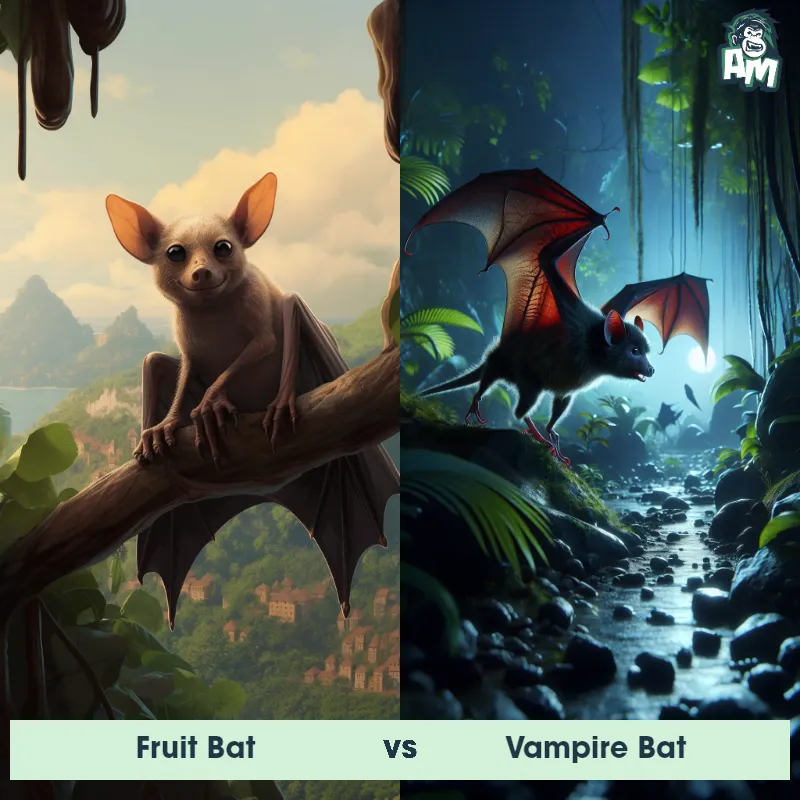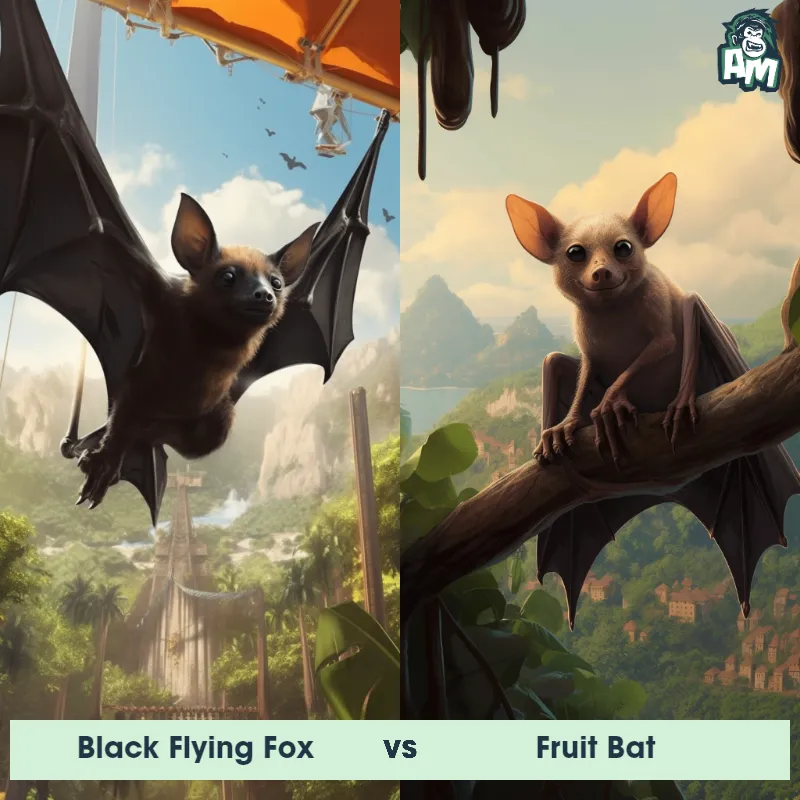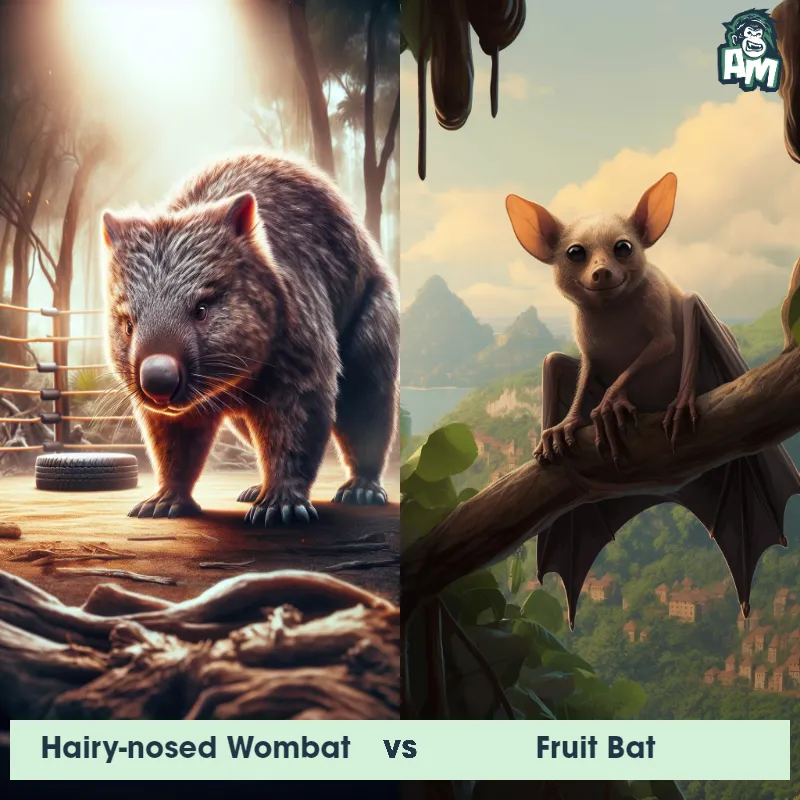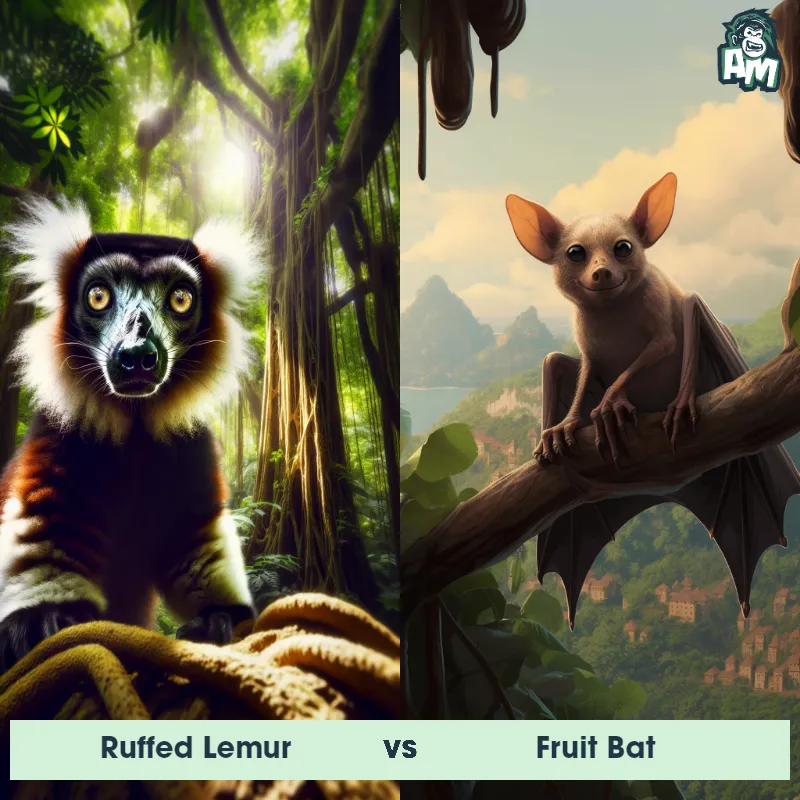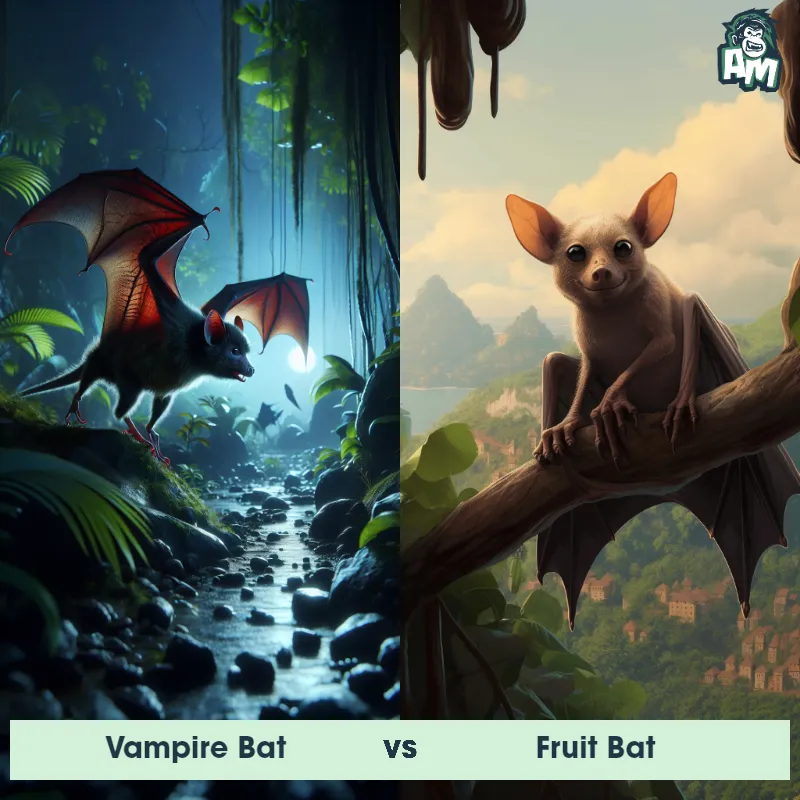The Fruit Bat
The Fruit Bat, also known as the flying fox, is an intriguing mammal that belongs to the order Chiroptera. With a distinctively large wingspan measuring up to 5 feet, fruit bats are equipped with a keen sense of hearing and sight to navigate through the night skies. They have a unique fox-like face with canine teeth adapted for tearing fruit, along with large eyes to aid in low light conditions. Covered in fur ranging from brown to gray, fruit bats have a graceful flight pattern and are known for their gregarious nature, forming large roosts in trees.
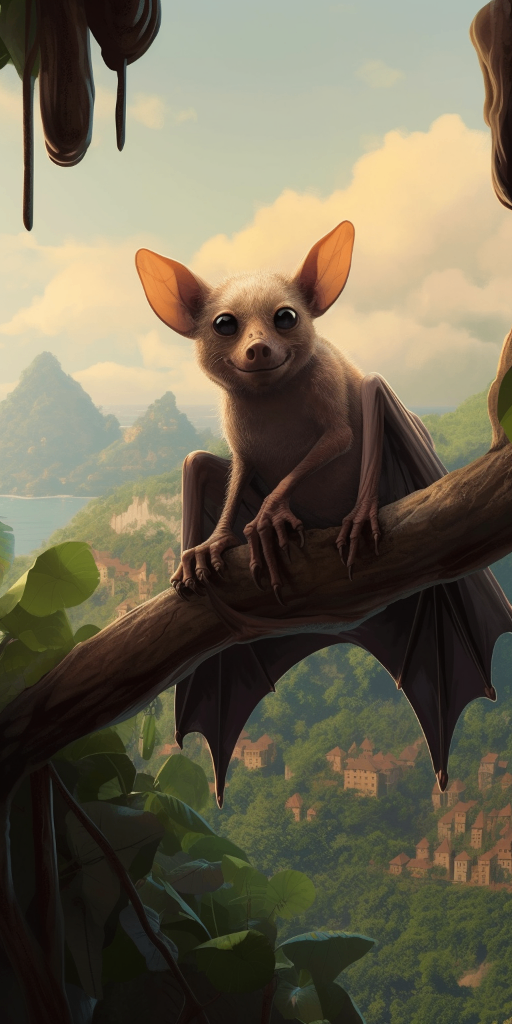
| Fruit Bat | |
|---|---|
| Size | Wingspan up to 5 feet (1.5 meters) |
| Weight | Up to 2.2 pounds (1 kilogram) |
| Speed | Speed: 20 mph (32.19 km/hr) |
| Key Strength | Flight and sharp teeth |
| Biggest Weakness | Vulnerable to predators while roosting |
| Scientific Name | Pteropodidae |
| Family | Pteropus |
| Habitat | Tropical and subtropical regions |
| Geography | Worldwide |
| Diet | Fruit |
| Lifespan | 20 years - 30 years |

The Fruit Bat
The Fruit Bat, also known as the flying fox, is an intriguing mammal that belongs to the order Chiroptera. With a distinctively large wingspan measuring up to 5 feet, fruit bats are equipped with a keen sense of hearing and sight to navigate through the night skies. They have a unique fox-like face with canine teeth adapted for tearing fruit, along with large eyes to aid in low light conditions. Covered in fur ranging from brown to gray, fruit bats have a graceful flight pattern and are known for their gregarious nature, forming large roosts in trees.
Fun Fact: Fruit bats play a major role in pollination, making them vital to the health and diversity of tropical ecosystems.
| Fruit Bat | |
|---|---|
| Size | Wingspan up to 5 feet (1.5 meters) |
| Weight | Up to 2.2 pounds (1 kilogram) |
| Speed | Speed: 20 mph (32.19 km/hr) |
| Key Strength | Flight and sharp teeth |
| Biggest Weakness | Vulnerable to predators while roosting |
| Scientific Name | Pteropodidae |
| Family | Pteropus |
| Habitat | Tropical and subtropical regions |
| Geography | Worldwide |
| Diet | Fruit |
| Lifespan | 20 years - 30 years |
Fruit Bat Matchups
We use AI to simulate matchups between the Fruit Bat and other animals. Our simulation considers size, strength, and natural predatory behaviors to determine the most likely outcome.
Fruit Bat: Diet, Predators, Aggression, and Defensive Behaviors
What do Fruit Bats eat?
Fruit Bats primarily feed on fruit, nectar, and pollen. They have a specialized diet that consists of a variety of fruits, such as bananas, mangoes, figs, and berries. Some species of Fruit Bats also drink nectar from flowers and play a crucial role in pollination.
Do Fruit Bats have any predators?
Fruit Bats are preyed upon by a few predators in their natural habitat. Some of their predators include birds of prey, such as owls and hawks, as well as snakes and large carnivorous mammals like wild cats and monkeys. However, their nocturnal habits and ability to fly make them less vulnerable to predators.
Are Fruit Bats aggressive?
Fruit Bats are not typically aggressive towards humans or other animals. They are known to be gentle creatures that prefer to avoid confrontation. However, they may become defensive if they feel threatened or are protecting their young.
Do Fruit Bats fight?
Fruit Bats may engage in minor squabbles or disagreements within their colonies over food resources or territory. These interactions are usually resolved without any serious fighting, as Fruit Bats prefer to maintain social harmony within their groups.
How do Fruit Bats defend themselves?
Fruit Bats have several defense mechanisms to protect themselves from potential threats. They have sharp claws and teeth that they can use to defend themselves if necessary. Additionally, Fruit Bats are agile flyers and can quickly escape from danger by taking to the air.
What is Fruit Bats' biggest weakness in a fight?
One of the biggest weaknesses of Fruit Bats in a fight is their relatively small size compared to some of their predators. While they have sharp teeth and claws, they may struggle to defend themselves against larger, more powerful predators. Additionally, their social nature means that they may prioritize protecting their group members over engaging in physical combat.
Fun Fact: Despite their common name, fruit bats do not solely rely on a diet of fruit, as they also consume nectar, pollen, and even leaves.
Fun Fact: Fruit bats have been recorded to engage in a behavior called "teakettle," where they rapidly flap their wings while hanging upside down, creating a distinct noise that serves as a form of communication among their colony.



